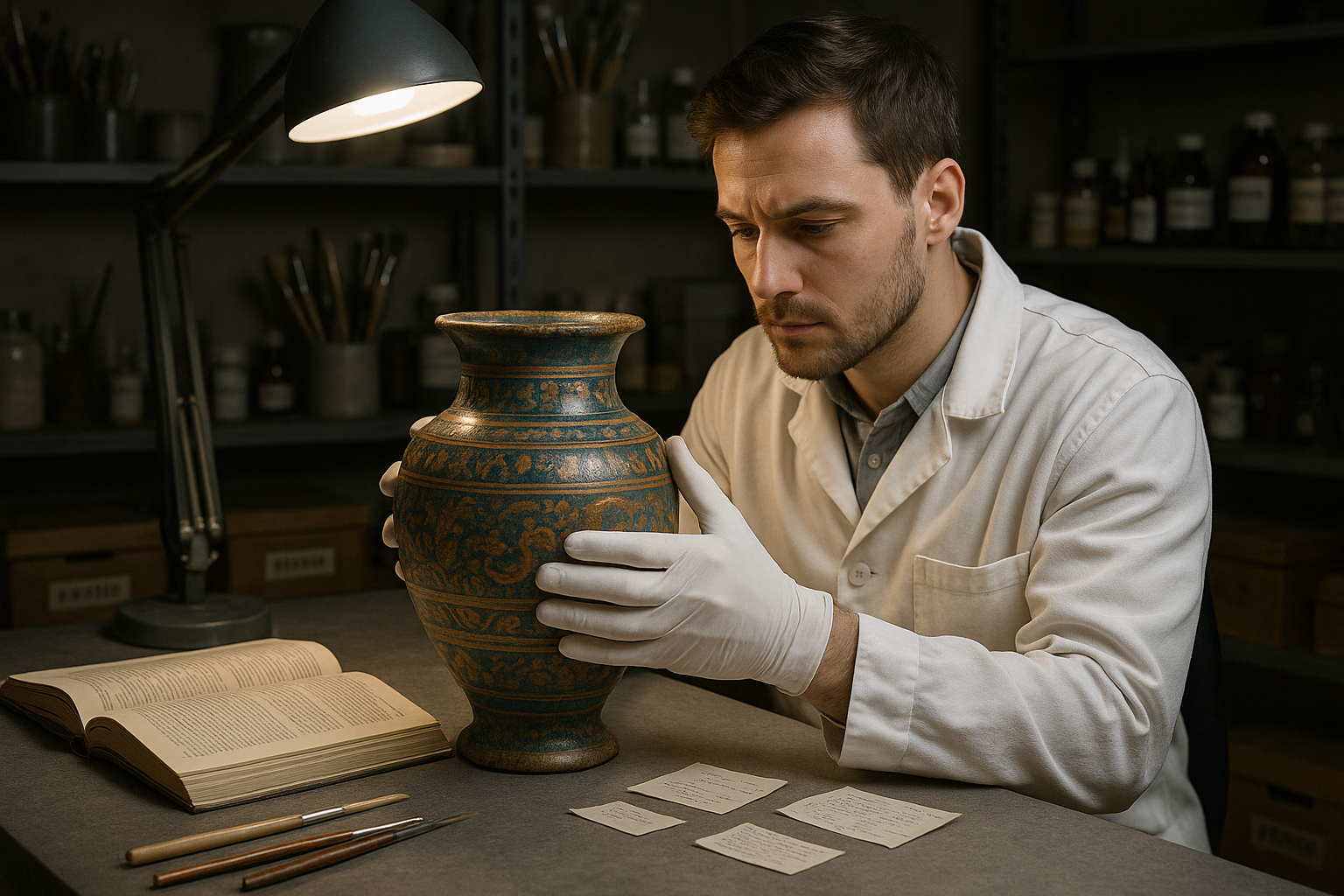In a world that increasingly values the digital and the ephemeral, there is a unique allure to holding a rare book in your hands. 📚 The texture of the paper, the scent of aged leather, and the weight of centuries-old knowledge combined create an experience that transcends time. But beyond the sensory delights, there is a deeper art at play—the art of cataloging these literary treasures. This is a meticulous craft that unveils the history, significance, and stories behind each volume.
Cataloging rare books is not merely an academic exercise; it is an exploration of human history and creativity. Each book is a testament to the thoughts and ideas of its time, a snapshot of the cultural, social, and intellectual currents that shaped its creation. By cataloging these books, we preserve their stories for future generations, ensuring that the wisdom and beauty contained within their pages are never lost. But what exactly does it mean to catalog a rare book, and why is this process so vital?
The journey into the world of rare book cataloging begins with understanding the intrinsic value of these works. Unlike mass-produced volumes, rare books are often unique due to their limited print runs, historical significance, or the fame of their authors. Some are centuries old, bound in exquisite materials, and may even contain handwritten notes from previous owners. Cataloging them requires a keen eye for detail and a deep appreciation for their historical context.
At its core, rare book cataloging is about creating a comprehensive record that captures the essence of a book. This involves documenting various elements such as the author, title, publication date, edition, and physical description. But it goes beyond the basics. A skilled cataloger will delve into the provenance of the book, uncovering its journey through time and the hands it has passed through. This is akin to detective work, piecing together clues to reveal a book’s past and its place in history.
Why is this process so fascinating, you ask? Because each book has a story to tell. Some were banned in their time, challenging societal norms and provoking thought. Others were treasured possessions, passed down through generations, carrying with them the personal histories of those who cherished them. The cataloging process transforms these narratives into accessible knowledge, allowing us to connect with the past in a profound way.
In this blog post, we will unlock the secrets of literary treasures by exploring the intricacies of rare book cataloging. We will delve into the skills required to become a proficient cataloger and the tools that aid in this craft. From understanding bibliographic descriptions to leveraging modern technology, we will cover the essential aspects of cataloging that ensure accuracy and comprehensiveness.
Furthermore, we will examine the challenges faced by catalogers in preserving rare books. These challenges include dealing with fragile materials, deciphering faded texts, and identifying authentic works amidst forgeries. By addressing these issues, catalogers play a crucial role in safeguarding our literary heritage, ensuring that rare books continue to inspire and educate future generations.
As we embark on this journey into the art of rare book cataloging, prepare to be enchanted by the world of literary treasures. Whether you are a bibliophile, a history enthusiast, or someone simply curious about the stories behind these books, this post will provide you with a deeper understanding of the meticulous process that preserves our cultural heritage. 🌟
Join us as we reveal the hidden stories and forgotten secrets of rare books, and discover how the art of cataloging breathes life into these precious relics. By the end of this exploration, you will not only appreciate the significance of rare book cataloging but also gain insights into the enduring power of books to transcend time and connect us with the past.

Conclusion: The Enduring Allure of Rare Book Cataloging 📚✨
In traversing the intricate pathways of rare book cataloging, we’ve delved into a fascinating world where history, art, and meticulous scholarship converge. The journey began with understanding the significance of rare books themselves, those vessels of knowledge and culture that transcend time and geography. These treasures, whether held in grand libraries or private collections, demand a specialized approach to their preservation and dissemination, underscoring the importance of cataloging as both a science and an art.
We explored the technical aspects of cataloging, from bibliographic standards to digital tools that facilitate the cataloging process. The use of metadata and digital databases emerged as crucial components, enabling greater accessibility and preservation. Such advancements are vital in our digital age, allowing collectors, scholars, and enthusiasts worldwide to engage with these works in unprecedented ways.
Moreover, the discussion illuminated the role of catalogers as custodians of cultural heritage. Their expertise not only preserves the physical state of rare books but also maintains their contextual significance. By documenting provenance, condition, and unique characteristics, catalogers ensure that the stories behind these books remain vibrant and accessible for future generations.
Furthermore, we touched on the growing intersection between technology and traditional methods, highlighting how innovations like AI and machine learning are beginning to play a role in cataloging practices. These technologies promise to revolutionize the field, offering new ways to analyze and interpret bibliographic data, yet they also call for a balanced approach that respects the nuances of human expertise.
The importance of this field extends beyond academic circles. As more individuals recognize the value of preserving literary history, the art of rare book cataloging becomes a shared responsibility, inviting wider participation. Whether you’re a seasoned collector or a curious novice, understanding the principles of cataloging empowers you to appreciate these literary treasures more deeply.
We must also acknowledge the community aspect inherent in this discipline. Sharing insights and resources strengthens the network of individuals dedicated to preserving our written heritage. Engaging with online forums, attending conferences, and participating in workshops are excellent ways to contribute to this vibrant community.
In closing, the art of rare book cataloging is not just about organizing books on a shelf; it is a gateway to understanding and preserving the rich tapestry of human thought and creativity. We encourage you to explore more about the practices and stories behind rare books and perhaps start your own journey into this captivating field.
Feel inspired to delve deeper? 💡 Share your thoughts and insights in the comments below. Your engagement not only enriches our community but also fuels the collective passion for the literary treasures that connect us all. Consider sharing this article with fellow enthusiasts and apply what you’ve learned in your own explorations. Together, let’s keep the spirit of rare book cataloging alive! 📖🔍
Thank you for embarking on this enlightening journey with us. May your pursuit of knowledge continue to unfold like the pages of a beloved book.
Further Reading on Rare Books | International League of Antiquarian Booksellers
In this conclusion, the article is recapped, its importance is emphasized, and the reader is encouraged to engage further with the topic. The use of emojis is minimal and strategically placed to enhance engagement without overwhelming the text. The provided links are to reputable sources that remain active and informative.
Toni Santos is a restoration artist and historical design specialist devoted to reviving the beauty and soul of the past. Through meticulous craftsmanship and a deep respect for heritage, Toni brings antiques back to life—preserving not just objects, but the stories they carry through time. With hands trained in traditional restoration techniques and an eye for age-worn elegance, Toni restores furniture, artworks, artifacts, and heirlooms with precision and reverence. His work reflects a belief that restoration is not correction—it’s conversation between the old and the present. Blending artistry, conservation ethics, and historical research, Toni approaches every piece as a narrative in wood, metal, leather, or fabric—each with scars that speak of eras gone by. Whether repairing a hand-carved chair or reviving a forgotten painting’s vibrance, he respects the integrity of original craftsmanship while honoring its continued life. As the creative force behind Vizovex, Toni shares before-and-after showcases, restoration walkthroughs, and visual essays exploring the techniques and philosophies behind authentic antique revival. His platform celebrates: The timeless value of handcrafted work The quiet artistry of repair and preservation The cultural memory embedded in material objects The delicate balance between age and renewal For collectors, curators, artisans, and lovers of legacy, Toni’s world is an invitation to see restoration not as fixing what’s broken—but as restoring what still lives beneath the dust of time.




